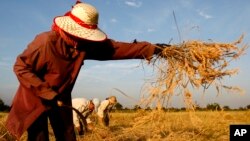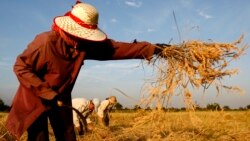When leaders of the world’s 8 top industrial countries, also known as G-8, met in L’Aquila, Italy in 2009, the global economic recession and escalating food prices had pushed over a billion people into food insecurity. In short, over one in 6 people went to bed hungry most nights.
Determined to do something about the problem, President Barack Obama announced Feed the Future, a U.S. Government inter-agency initiative to fight global hunger in 19 countries, largely through focusing on smallholder farmers, particularly women.
So we can better understand what works and what doesn’t, right from the beginning, the performance and impact of individual Feed the Future programs were evaluated and the results collected by the Peace Corps, the Millennium Challenge Corporation and the U.S. Agency for International Development, or USAID, which leads the initiative. In mid-March, little more than five years after Feed the Future was launched, the collected information was synthesized and issued as a report.
So what is the best way to eliminate hunger? According to the report’s findings, when it comes to development, people and relationships matter most.
“When our development programs leveraged strong community relationships and trusted and transparent community-based organizations, they were better able to achieve their objectives such as building resilience, expanding markets, closing gender gaps, and lifting vulnerable people out of poverty,” wrote Emily Hogue and Zachary Baquet in a recent blog post. Both are involved with Feed the Future.
It is also worth noting that successful programs within Feed the Future shared some elements. Today we know that large-scale impact necessitates a long-term effort. Successful programs invest in research and development and promote coordination among partners. And crucially, projects that integrate quality training as part of their activities with a community can lead not only to successful change, but also lasting change.
Through Feed the Future, we are reducing poverty and malnutrition around the world, and we are learning from these accomplishments
“Feed the Future,” said USAID Administrator Gayle Smith, “is a powerful example of what we can achieve when the world comes together around a shared global challenge, working with countries that want to take ownership of, contribute to, and be accountable for improving their food security.”

















